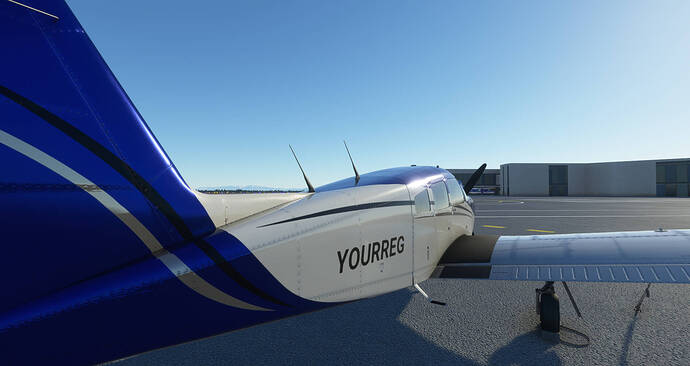Ever since I sat down with Google Earth flight sim at the age of 9, I had one dream: to fly someone else’s property.
Wait no, that doesn’t sound right. So anyway, I had one dream: to be stuck temporarily renting aircraft that I don’t own from tourist organizations and flight schools, forever being a flying advertisement for some arbitrary companies I never cared about.
No wait, that’s not it either.
While the second point is a different issue and is mostly up to taste, the first is directly addressable with tail numbers. I will use the JustFlight Piper Arrow III as an example: I have currently only found 4 liveries that allow the user to set their own number. There are some seriously great liveries on flightsim.to, some of which are simply jawdropping, but all of them have the tail number of some real-life aircraft, painted onto them as part of their texture.
I previously believed that this issue was unaddressable, that there was clearly something special one had to do to make a custom tail number. Except, I recently found out that there is only one step that any user can do: if one appends the word “Custom” to the title field in aircraft.cfg, one would suddenly be able to input their own tail number onto the aircraft. Now, the issue has changed, as the custom livery overlaps with the “hardcoded” livery.
So I would like to put forth these two suggestions:
Suggestion 1: when making a livery, consider using the provided tail number id, font, and color fields in aircraft.cfg to create your tail number, rather than permanently painting it onto the livery. Then, if so desired, the user can simply change the tail number in aircraft.cfg and have it display in your style and in the correct location.
Suggestion 2: if you do need the level of control given by GIMP or Blender to create your tail number (or are creating a real-life replica livery and need a baked-in tail number) and see that your livery indeed has the space to fit MSFS 2020’s default livery font size and position, consider saving a backup of the livery before you add the tail number and simply distribute it as a “blank” version, in tandem with the original. Then, the user can simply append “Custom” to the livery title and add anything they want with 0 issues.
Thank you for your consideration, please correct me if my understanding of aircraft.cfg is not applicable to other aircraft.
